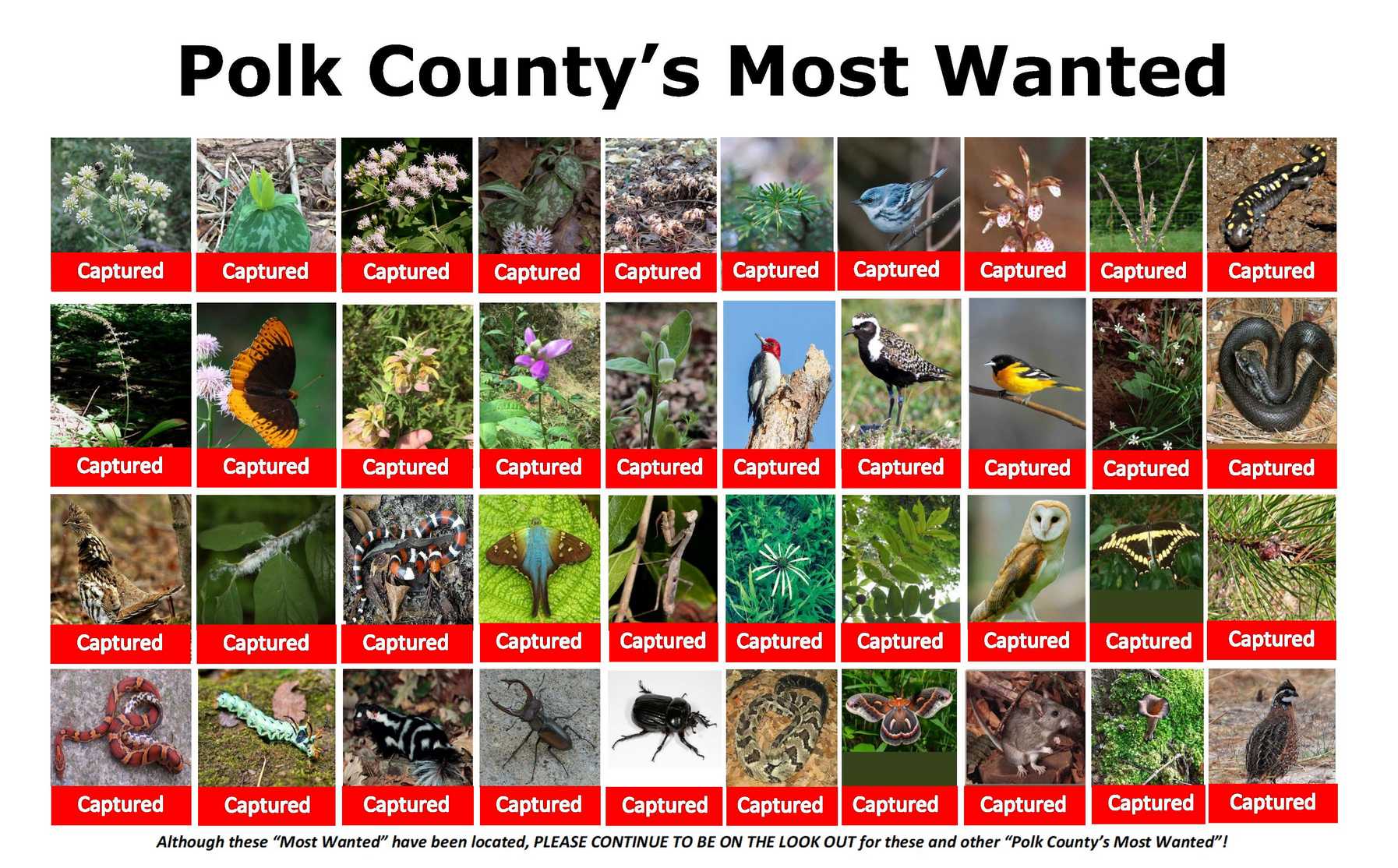Polk County’s Most Wanted – Concludes
After nearly ten years, Conserving Carolina and David Campbell have decided to conclude the “Polk County’s Most Wanted” community science initiative.
First announced in 2012, “Polk County’s Most Wanted” began as a series of monthly news articles spotlighting a plant, animal, or habitat rare or unique to the county. The articles gave a description of the highlighted species and asked for the community’s help to locate it in the county. The goal of the project was to document the species occurrence in the county, inspire the community to get involved and interested in the unique and wonderful organisms found in the region, and to encourage preservation of the biodiversity that makes this county special and unique. Additionally, data provided by the community was included in and aided in the creation of a comprehensive bio-inventory of Polk County and culminated in the creation of, “An Inventory of the Significant Natural Areas of Polk County, North Carolina,” published in 2018.
Polk County is unique. Part of the county is located within the Southern Blue Ridge Escarpment, an area where the Blue Ridge Mountains rise nearly 4,000 feet above sea level from the rolling piedmont, and it contains some of the highest natural diversity of rare plants and animals found anywhere in the world. Parts of the county are also located in a thermal belt, an area in the mountains or foothills that experiences a milder slope climate and longer growing season. There are also numerous areas with unique geology that result in a rich diversity of plants.
Because of these unique qualities, the county is anomalous in the state and there are several species that have been found here and nowhere else in North Carolina (that we know of), such as Allegheny-spurge (Pachysandra procumbens), Whorled Horsebalm (Collinsonia verticillata), and False Hellebore (Veratrum woodii). These three species are disjunct from their typical distribution in the Ozarks. There is also an amazing historical record from Polk County; Largeleaf leather-root (Orbexilum macrophyllum) was found on White Oak Mountain, near Tryon Peak, in the latter part of the nineteenth century – and never seen again!
During the nearly ten-year series of articles, one hundred and ten articles and species and/or habitats were highlighted. Of the “Most Wanted” spotlighted, and thanks to the community’s participation, forty “Most Wanted” species have been “Captured” and found within the county. This citizen-science project has aided in the expanding the understanding of the flora and fauna of Polk County.
David Campbell states, “The presence of no less than thirty-four distinct natural community types is…a testament to the incredible biodiversity to be found within the borders of Polk County. As such, Polk County deserves its recognition as a unique and highly valued component of North Carolina’s rich natural heritage.”
Although the monthly articles will cease, we still need the community’s help to find the “Most Wanted” species still at large. Members of the community are encouraged to visit Conserving Carolina’s website, conservingcarolina.org/polk-most-wanted, for more information about “Polk County’s Most Wanted” and to download and print a “Pocket Guide” with all of the “Most Wanted” plants, animals, and habitats that you can be on the lookout for!
Also, a culmination of David Campbell’s seven years in the field documenting the rare and significant flora and fauna in Polk County have been compiled in a book titled, “An Inventory of the Significant Natural Areas of Polk County, North Carolina.” The document can be downloaded for free on Conserving Carolina’s website at conservingcarolina.org/polk-county-inventory, or a hard copy can be purchased, at cost, on Amazon.
Conserving Carolina, your local land trust, works to protect, restore, and inspire appreciation of nature. Learn more and become a member at conservingcarolina.org.
